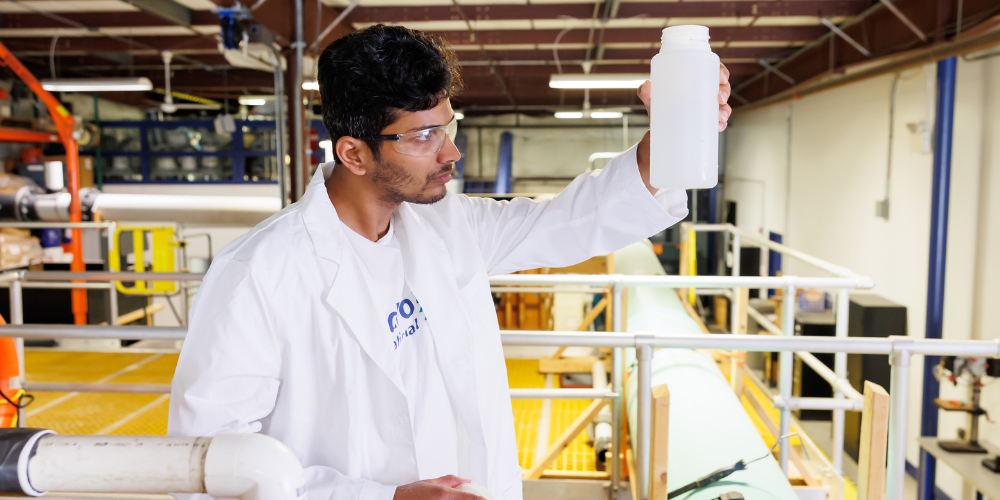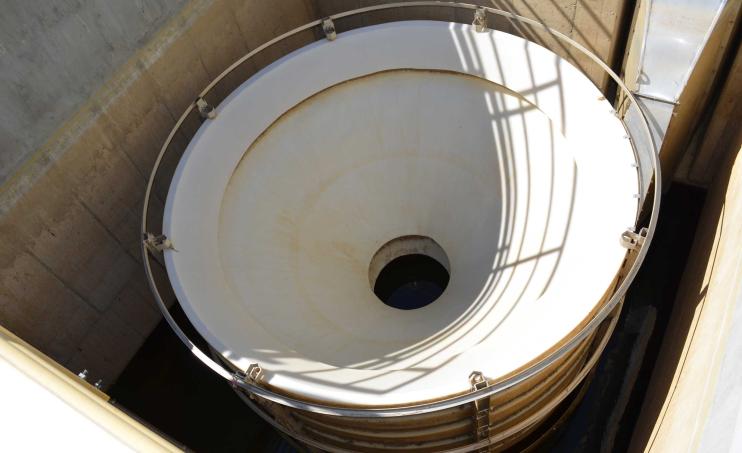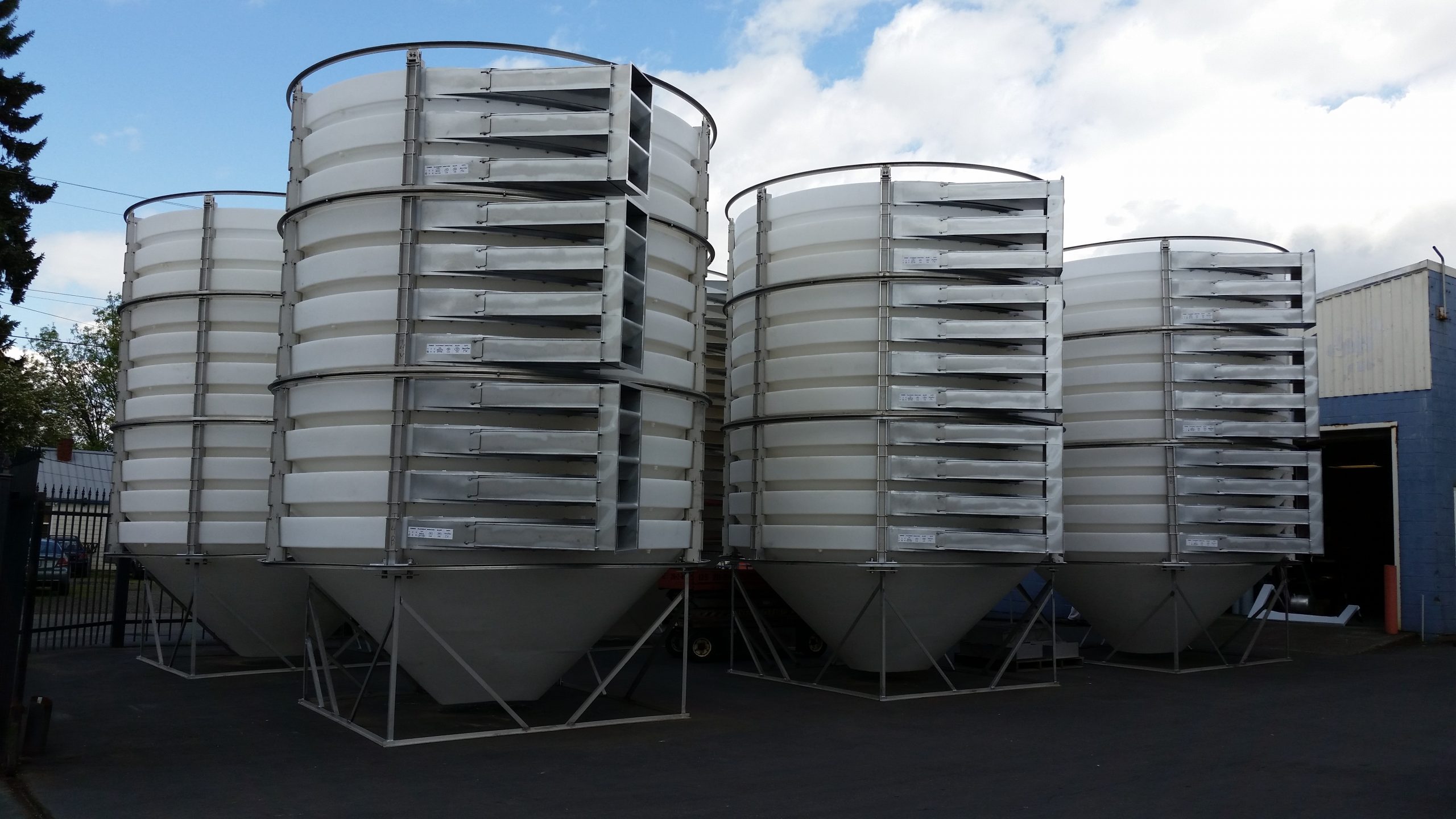April 30, 2024
Behind the Scenes: How Hydraulics Labs Drive Water Innovation

Oldcastle Infrastructure has made significant investments in water research capabilities, including the acquisition of two companies centered around their hydraulics labs.
What’s going on in these laboratories, and why are they so important? And how do they help to advance solutions that solve global water challenges?
Solving water infrastructure challenges through innovation
Improving the world’s water infrastructure requires innovative products, and Oldcastle’s hydraulics laboratories are at the center of this research and development.
These labs allow for an expert understanding of the scientific principles of fluid mechanics, opening possibilities in a wide range of markets and applications. From the smallest stormwater quality manhole to the largest municipal wastewater treatment plant, the fundamental processes of solid-liquid separation are the same regardless of scale or purpose.
The result of this commonality is that labs like those in Oldcastle’s Portland, Maine facility can leverage knowledge gained in one market, such as stormwater management, to develop improved solutions in another market, like wastewater treatment.
New product development can get a head start when the seed for innovation can be imported from an adjacent technology.
Certified compliance and proven performance
Outside of new product development, hydraulics laboratories serve two key testing functions.
Protocol testing verifies that equipment will comply with the stringent requirements set forth by regulatory bodies. The results of these tests assure regulators and the public that the treatment technology performs as claimed and is safe for implementation in the built environment.
The Oldcastle Water Lab (OWL) in Mississauga, Ontario has years of experience navigating the intricacies of regulatory test protocols for a wide range of stormwater treatment technologies ranging from hydrodynamic separators to cartridge filters to engineered biofiltration systems.
Performance testing, on the other hand, pushes equipment beyond its recommended limits. The valuable data gained by this experience allows CRH’s engineers to understand how the equipment behaves under extreme conditions. The results of these tests can then be incorporated into the next generation of products, improving overall reliability and system performance.
To put water treatment systems through Protocol and Performance testing, a best-in-class lab needs:
- A large-scale water reservoir: A substantial water supply, temperature controlled and recirculated, is essential for conducting high flow rate experiments.
- Advanced filtration systems: Maintaining water cleanliness is critical for accurate testing and test protocol compliance.
- Configurable tank systems: The ability to configure tanks as a single unit or separate compartments offers maximum flexibility for various testing scenarios.
- An expert team: The real value of a hydraulics lab is in the expertise of the people designing the tests, interpreting the data and applying the findings.
From prototype to product
The development of effective water treatment technologies is an iterative process and the testing described above is just one part of the whole journey.
Just as full-scale tests are important for proving system efficacy, bench-scale experiments like media columns, scale models and small-scale test tanks, allow for initial concept validation and identification of factors influencing performance.
Once these small-scale “proof-of-concept” systems are working as desired, they can then be scaled up and tested at full scale within the same facility.
Finally, an integrated analysis lab is essential for interpreting test data from experiments at any scale. Equipment like balances, sieves and filters along with hydrometers and spectrophotometers allow for detailed analysis of water samples, providing a clear picture of a technology’s effectiveness in removing both solid and dissolved pollutants.
Bringing this analysis expertise in-house allows the team working on the product to learn and adapt as quickly as possible.
Investing in a sustainable future
At the forefront of sustainable water management, hydraulic labs embody Oldcastle Infrastructure’s commitment to pushing the boundaries of innovation and ensuring the reliability of water treatment technologies.
This continued investment in hydraulics R&D isn’t just a strategy; it’s a pledge to future generations to manage our water resources wisely and sustainably.
Through these efforts, Oldcastle Infrastructure, as a key part of CRH, is not merely tackling today’s water management challenges but is also laying the groundwork for a future where water resources are safeguarded, showcasing the power of blending scientific exploration with practical application.
Next
- Read about how we’re going beyond stormwater performance testing
- Discover the Hydro-Shield™ Advance stormwater separator, developed at our Portland, Maine hydraulics lab



